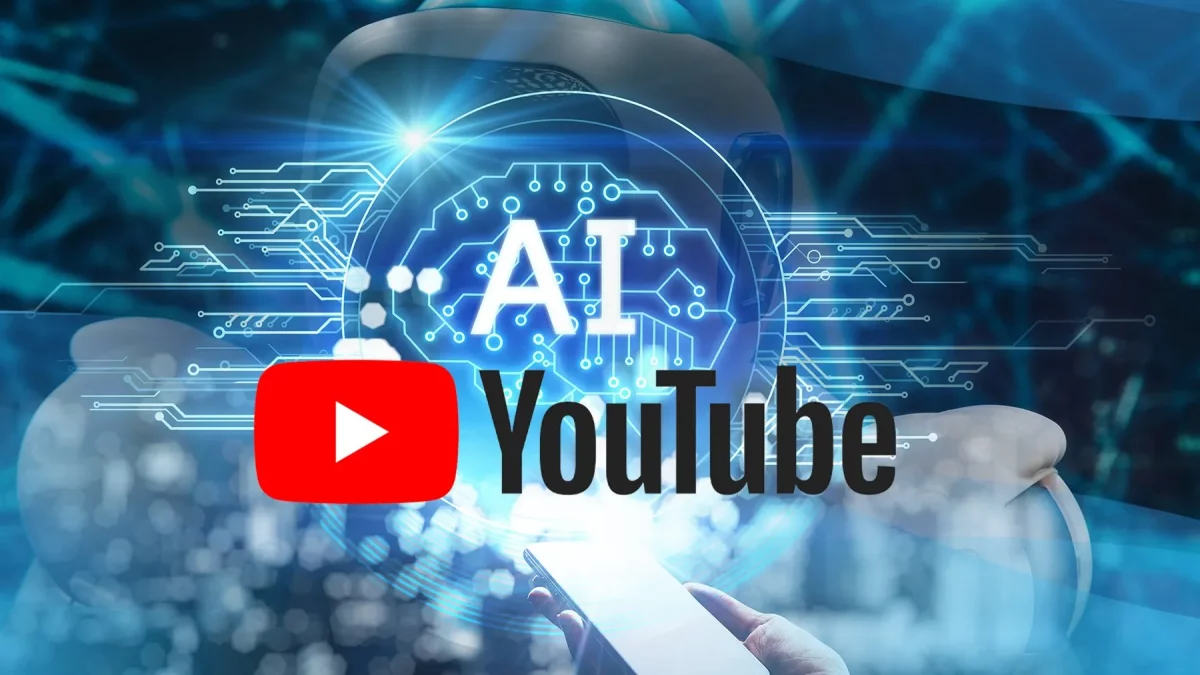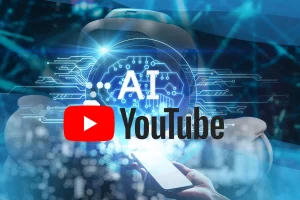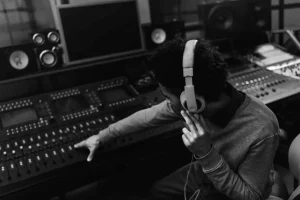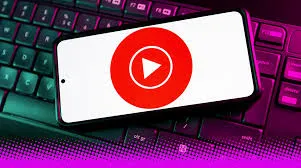
How YouTube’s AI is Changing the Game for Copyrighted Music
In today’s digital age, music has become an integral part of our lives. Whether it’s through streaming platforms like Spotify or Apple Music, or through videos and social media posts, music is constantly being shared and consumed by people all over the world. However, with this widespread sharing comes the issue of copyright infringement. With the rise of YouTube as a popular platform for sharing music, there have been numerous complaints about copyrighted material being used without proper permission from the artist or record label.
To combat this issue, YouTube has implemented a new AI technology that aims to detect and remove any copyrighted music from videos uploaded to the platform. This has sparked a lot of debate and discussion in the music industry, with some applauding YouTube’s efforts to protect artists’ rights and others questioning the effectiveness and potential consequences of the AI. In this article, we will delve deeper into this topic and explore how YouTube’s AI is changing the game for copyrighted music.
What is YouTube’s AI?

Before we dive into the impact of YouTube’s AI on copyrighted music, let’s first understand what exactly it is. AI, or artificial intelligence, is a term used to describe the ability of machines and computers to mimic human cognitive functions such as learning and problem-solving. In the case of YouTube’s AI, it refers to the technology they have developed to automatically scan and analyze videos uploaded to the platform for any copyrighted material.
This technology uses a combination of audio and visual recognition algorithms to identify copyrighted music in videos. It can also track patterns and similarities between different versions of the same song, making it easier to detect even slight variations or remixes. Once the AI has identified copyrighted material, it will either block the video from being published or demonetize it, meaning that the video will not generate any revenue for the creator.
While YouTube’s AI has been around for a few years now, it was only in late 2020 that they announced an update to their Content ID system, which is the platform’s tool for detecting copyrighted material. This update included improvements to the AI’s accuracy and efficiency, as well as a new feature that allows creators to edit out the copyrighted material before it gets flagged.
The Impact on Creators
With YouTube being a major source of income for many content creators, the implementation of this AI has caused quite a stir among the community. On one hand, it provides a sense of security for artists and record labels who have been struggling with the issue of copyright infringement on the platform. On the other hand, it can be seen as a hindrance for creators who rely on using music in their videos to enhance their content and engage with their audience.
Limitations on Creativity
One of the main concerns raised by content creators is that YouTube’s AI limits their creative freedom. Many YouTubers use music in their videos to set a certain mood or tone, or to add an extra layer of entertainment. However, with the new AI in place, they may have to resort to using royalty-free or original music, which may not always suit the theme or style of their videos.
This limitation on creativity also extends to cover songs or parodies, which are often used as a form of commentary or critique. These types of videos may now be flagged by the AI for containing copyrighted material, even if they fall under fair use guidelines. As a result, creators may feel discouraged from making such videos, thus limiting their expression and voice on the platform.
Revenue Loss
Another major impact of YouTube’s AI on creators is the potential loss of revenue. With the demonetization of videos containing copyrighted music, creators may see a decrease in their earnings, which could affect their livelihoods. While YouTube does allow creators to dispute the claims made by the AI, the process can be lengthy and may not always result in a favorable outcome.
This revenue loss also extends to artists who have given permission for their music to be used on the platform. In the past, creators could monetize videos with licensed music by splitting the revenue with the artist or record label. However, with the AI automatically detecting and demonetizing these videos, both the creator and the artist may see a decrease in their earnings.
Impact on Small Creators
The impact of YouTube’s AI is felt even more strongly by small and independent creators. Unlike major record labels who have the resources to navigate through copyright claims and negotiate deals, small creators may struggle to protect their content and earn a fair share of revenue. This can be especially damaging for up-and-coming artists who use YouTube as a platform to promote their music and reach a wider audience.
Moreover, smaller creators may not have access to original or royalty-free music, making it harder for them to create engaging content that meets the standards set by the platform’s algorithm. As a result, they may be at a disadvantage compared to larger channels with the resources to create high-quality original content or purchase licenses for copyrighted material.
The Impact on Artists and Record Labels

While YouTube’s AI has been mostly seen as a positive step towards protecting artists’ rights, it also has some implications for musicians and record labels. One of the main concerns raised by artists is the potential loss of exposure and promotion on the platform. With the AI detecting and blocking videos containing copyrighted music, artists may not get the same level of visibility and reach as before, hindering their ability to connect with fans and gain new listeners.
Record labels, on the other hand, may face financial losses due to the demonetization of videos using licensed music. While YouTube has stated that they are working with record labels to ensure that the AI does not mistakenly flag licensed content, there is still room for error. This could result in a decrease in revenue for both the label and the artist, as well as potential conflicts between them and YouTube.
The Debate on Fair Use
Another major point of discussion surrounding YouTube’s AI is its impact on fair use. Fair use is a legal concept that allows for the use of copyrighted material without permission for the purpose of commentary, criticism, or parody. However, with the AI automatically flagging videos for containing copyrighted music, it may not always take into account whether the use falls under fair use guidelines.
This has sparked concerns about censorship and stifling freedom of expression on the platform. Critics argue that the AI cannot accurately determine the context in which a particular song is being used, and therefore may incorrectly flag videos that are covered under fair use laws. This can be problematic for creators who rely on such content to create commentary or critique, as well as for viewers who may miss out on valuable discussions and opinions.
The Future of Music on YouTube

With the release of YouTube’s new AI, there have been many changes in how music is shared and consumed on the platform. However, the question remains – what does the future hold for music on YouTube? While the impact of the AI has sparked a lot of debate and controversy, it’s also important to consider the potential benefits and improvements it can bring to the industry.
Protection for Artists and Record Labels
One of the main advantages of YouTube’s AI is its ability to protect artists and record labels from copyright infringement. With the platform constantly growing and videos being uploaded at a rapid pace, it can be challenging for artists and labels to keep track of all their copyrighted material. The AI provides a solution to this problem by automatically detecting and removing any unauthorized use of their music, thus ensuring that they receive proper credit and compensation for their work.
Encouraging Original Content and Licensing
The implementation of the AI may also encourage creators to shift towards using original music or obtaining licenses for copyrighted material. While this may limit their creative freedom, it also provides a solution to the issue of copyright infringement. By using licensed music, creators can ensure that they are not in violation of any laws and can continue to monetize their videos without any issues.
Moreover, this may encourage artists and record labels to create more opportunities for licensing their music on the platform. With the potential for increased exposure and revenue, they may be more open to working with smaller creators and independent musicians, thus fostering a more diverse and collaborative music community on YouTube.
Improving Content Quality
Another potential benefit of the AI is the improvement in content quality on the platform. With creators being more cautious about using copyrighted material, they may have to put more effort into creating original and engaging content. This could result in a shift towards higher quality videos, which can ultimately benefit both viewers and creators.
Conclusion
In conclusion, YouTube’s AI has sparked a lot of discussion and debate within the music industry and the creator community. While there are concerns about its impact on creativity and fair use, there are also potential benefits such as protecting artists’ rights and encouraging original content. As the platform continues to evolve and adapt, it is important for all stakeholders to find a balance between protecting copyright and promoting creativity and expression.